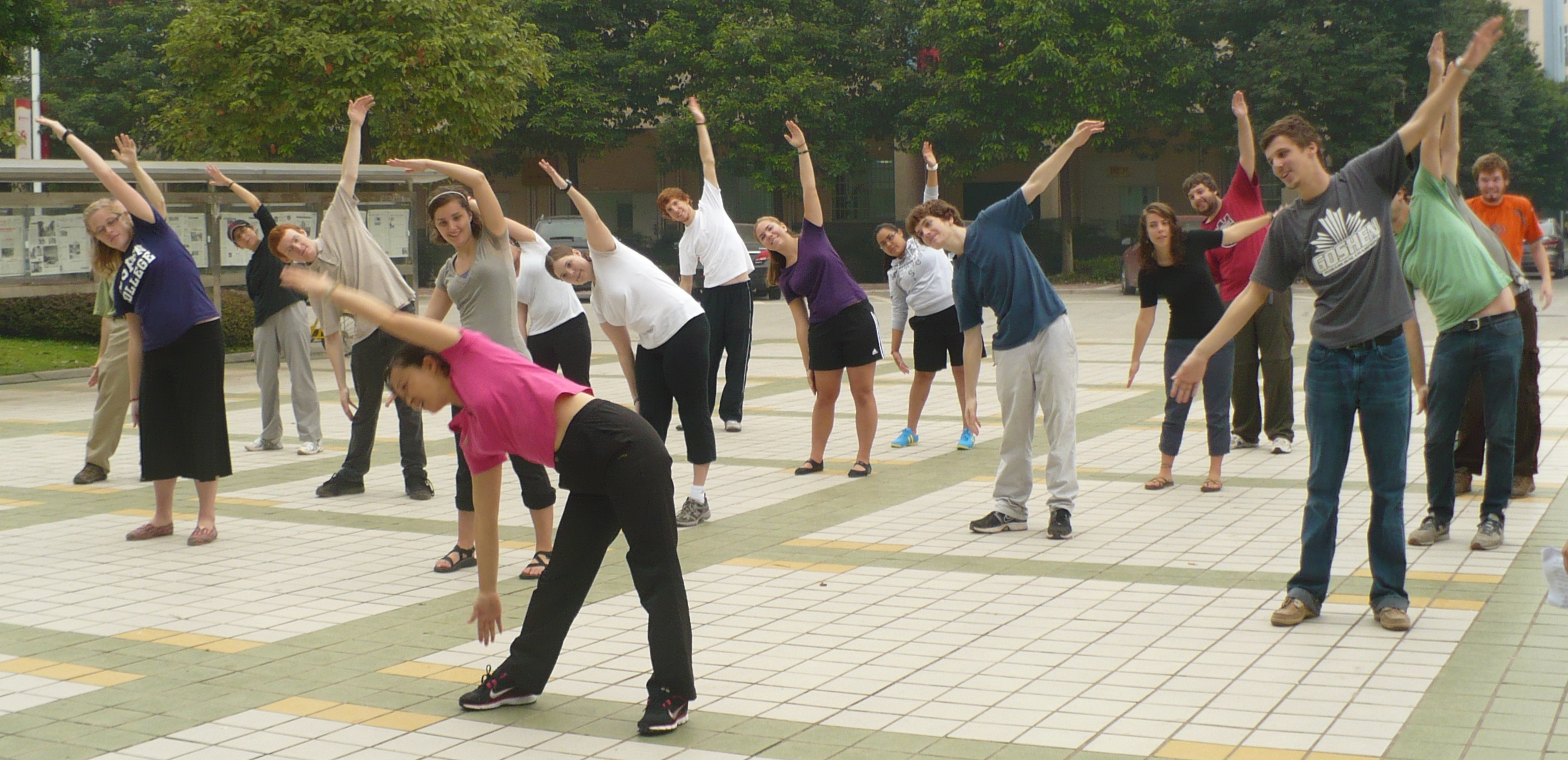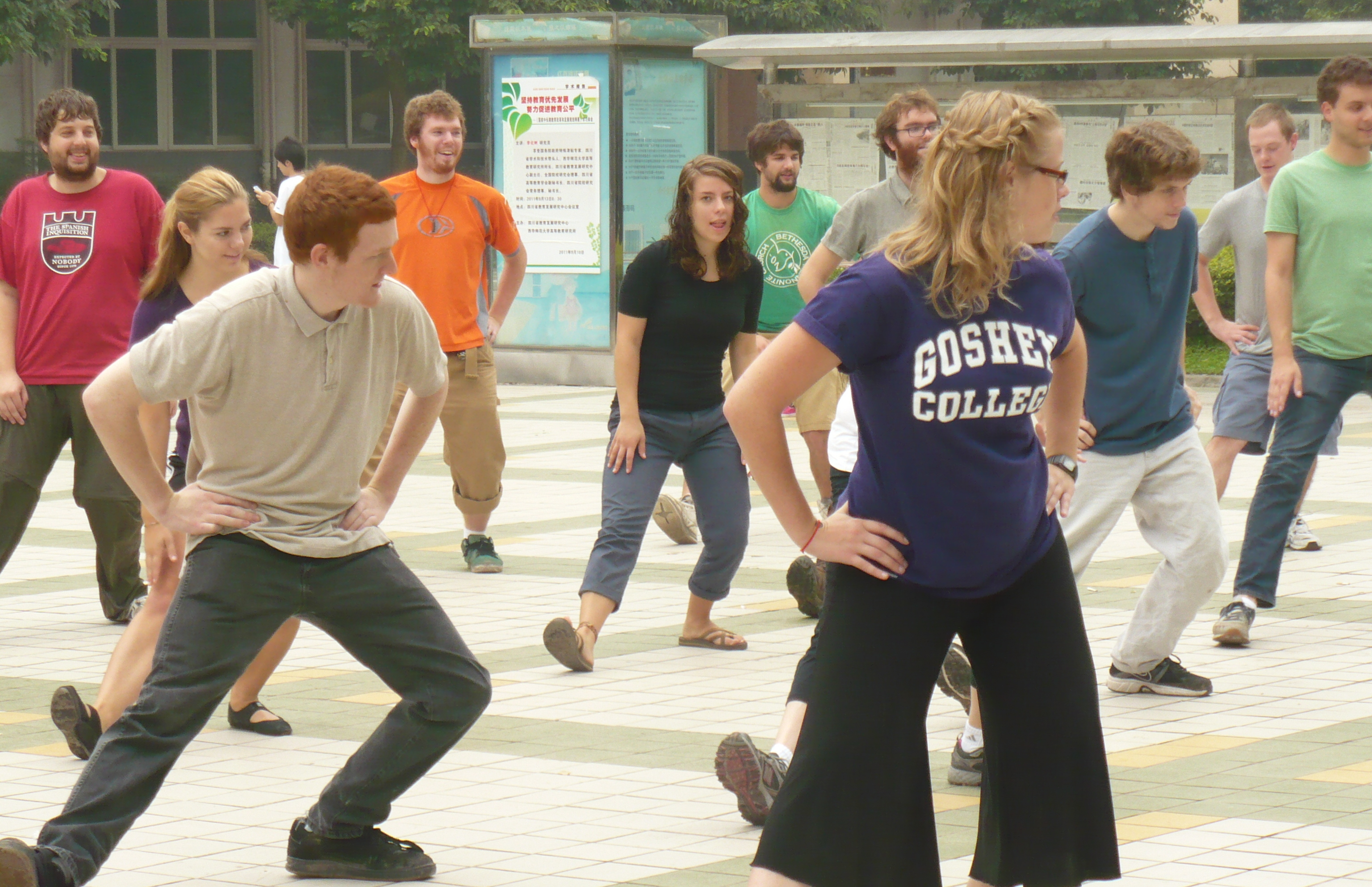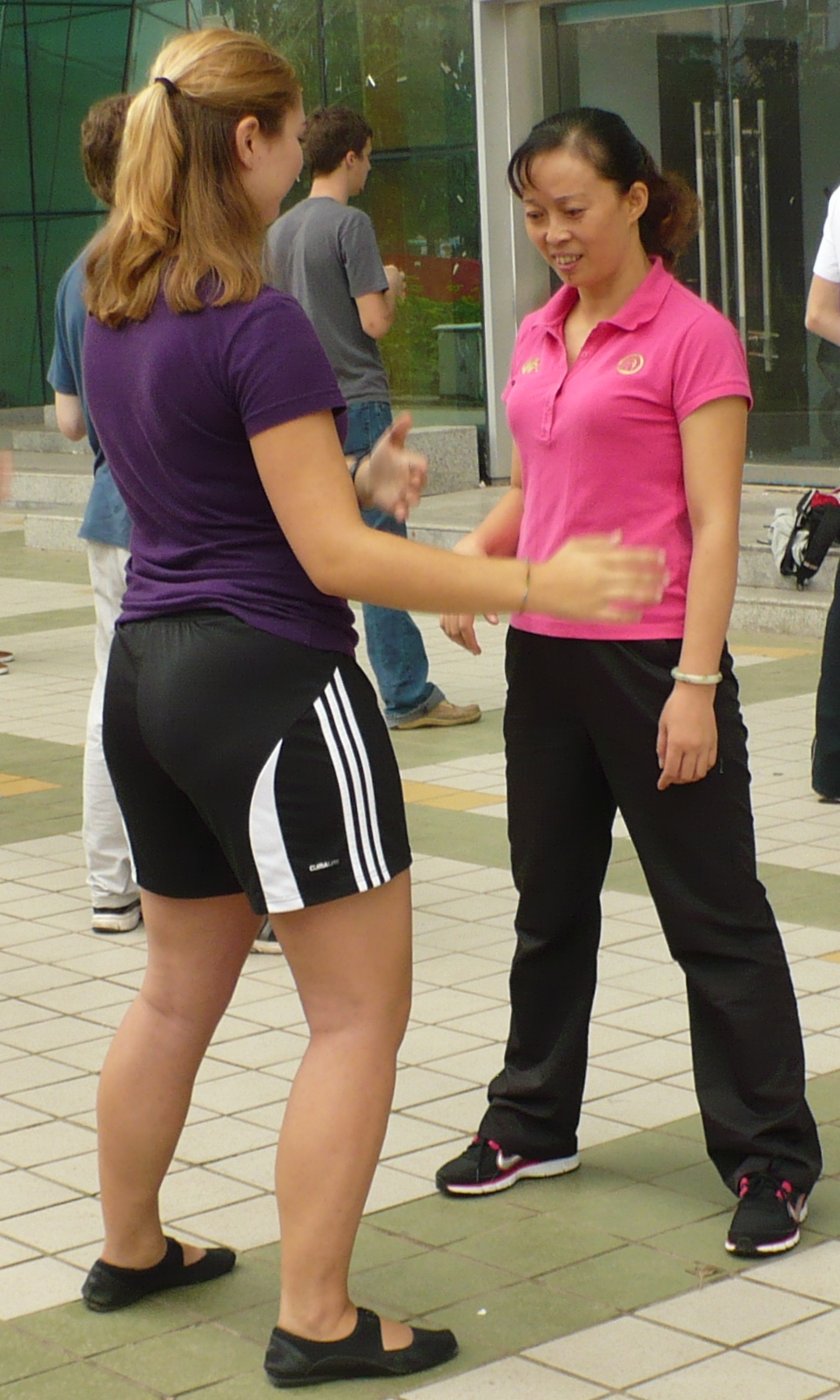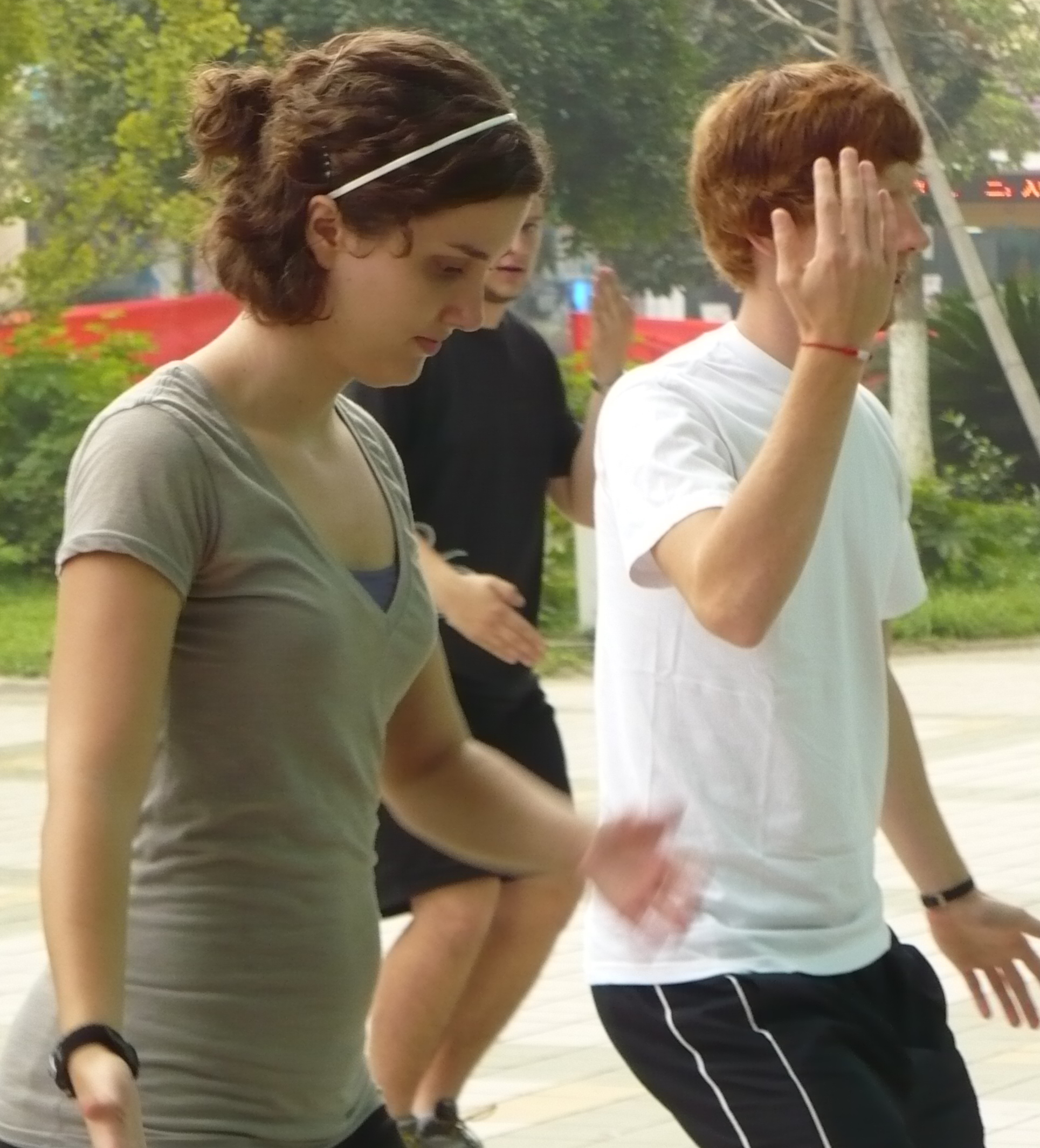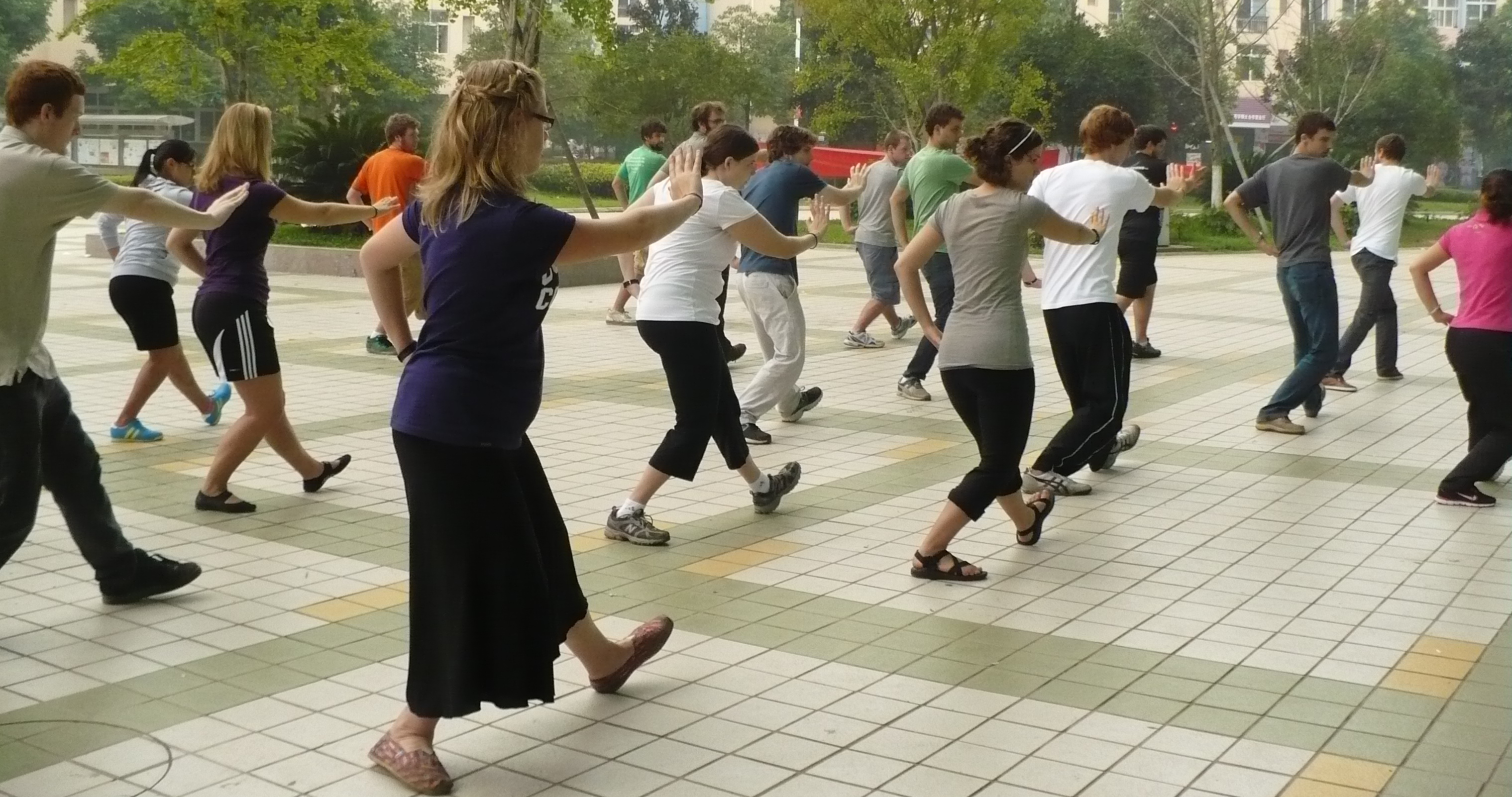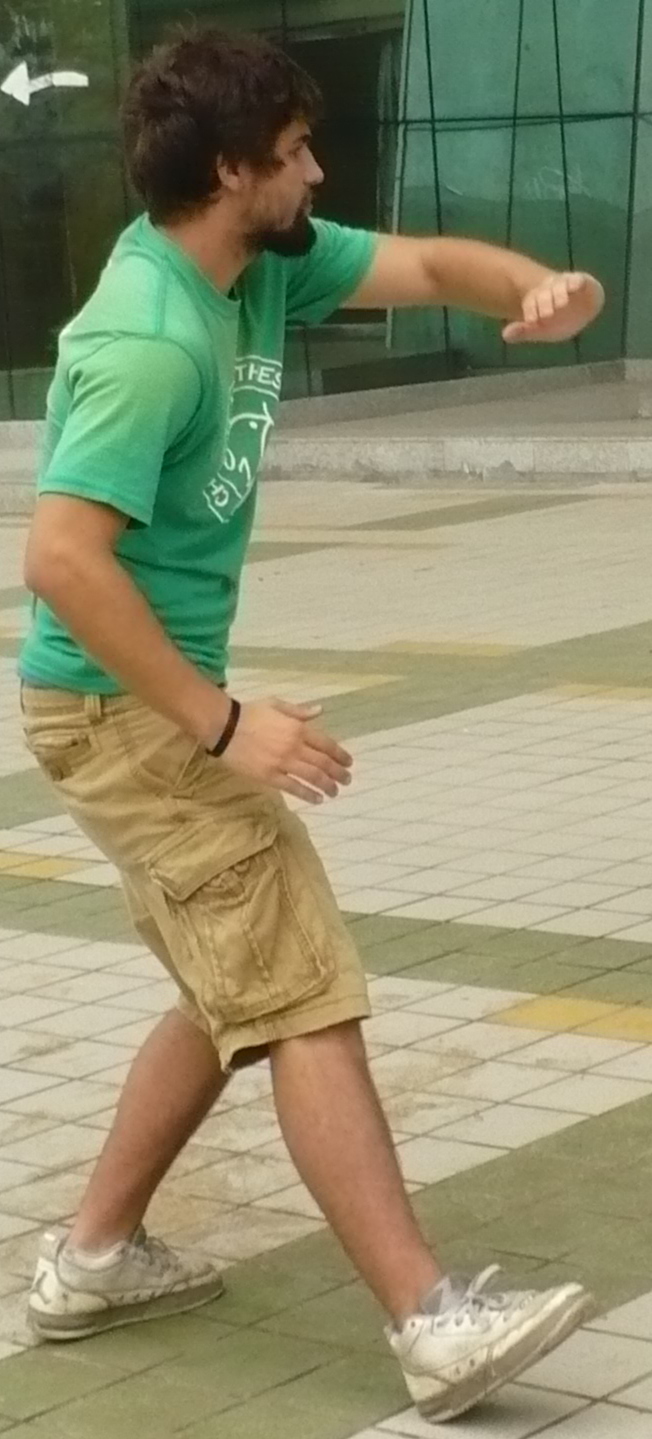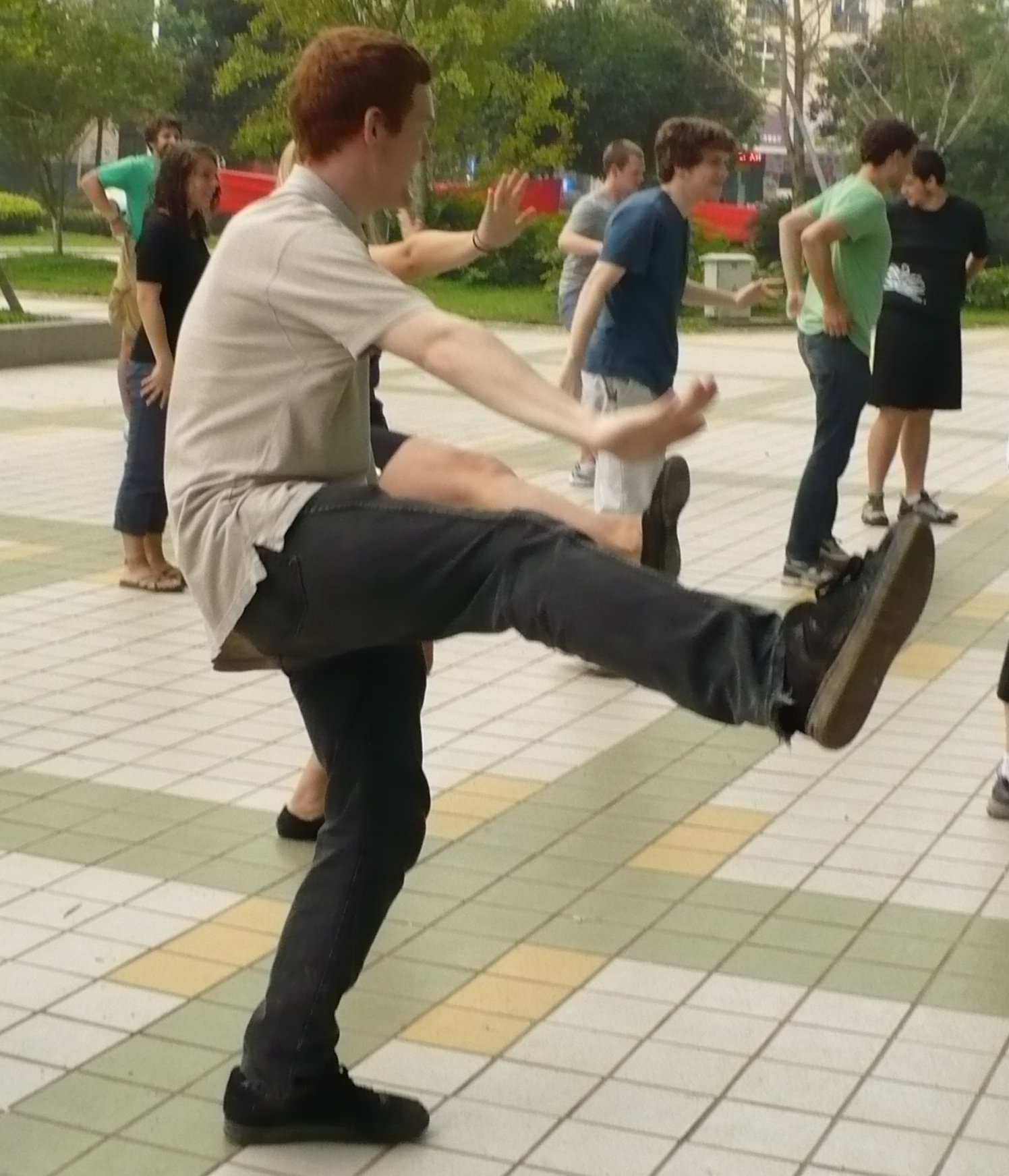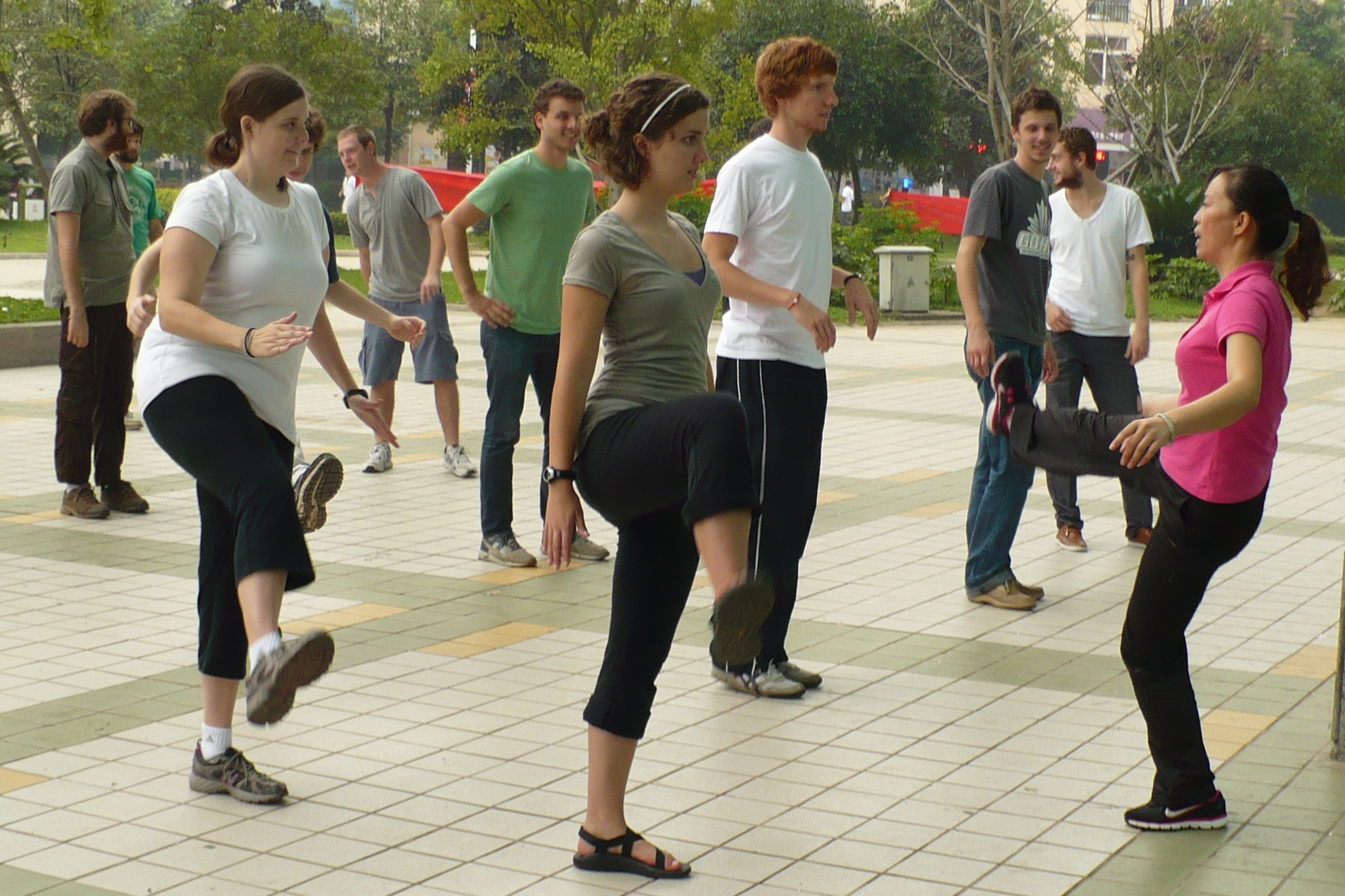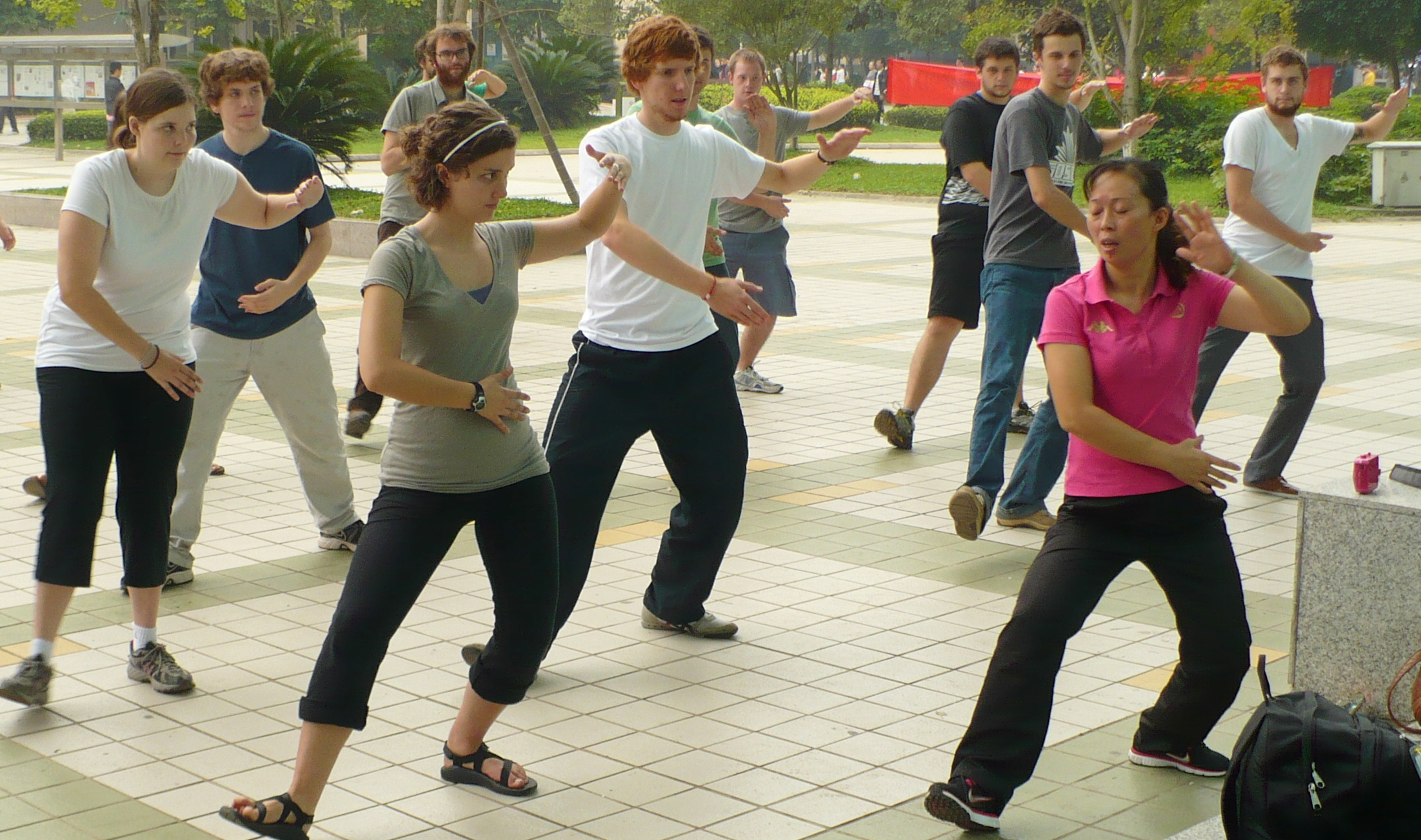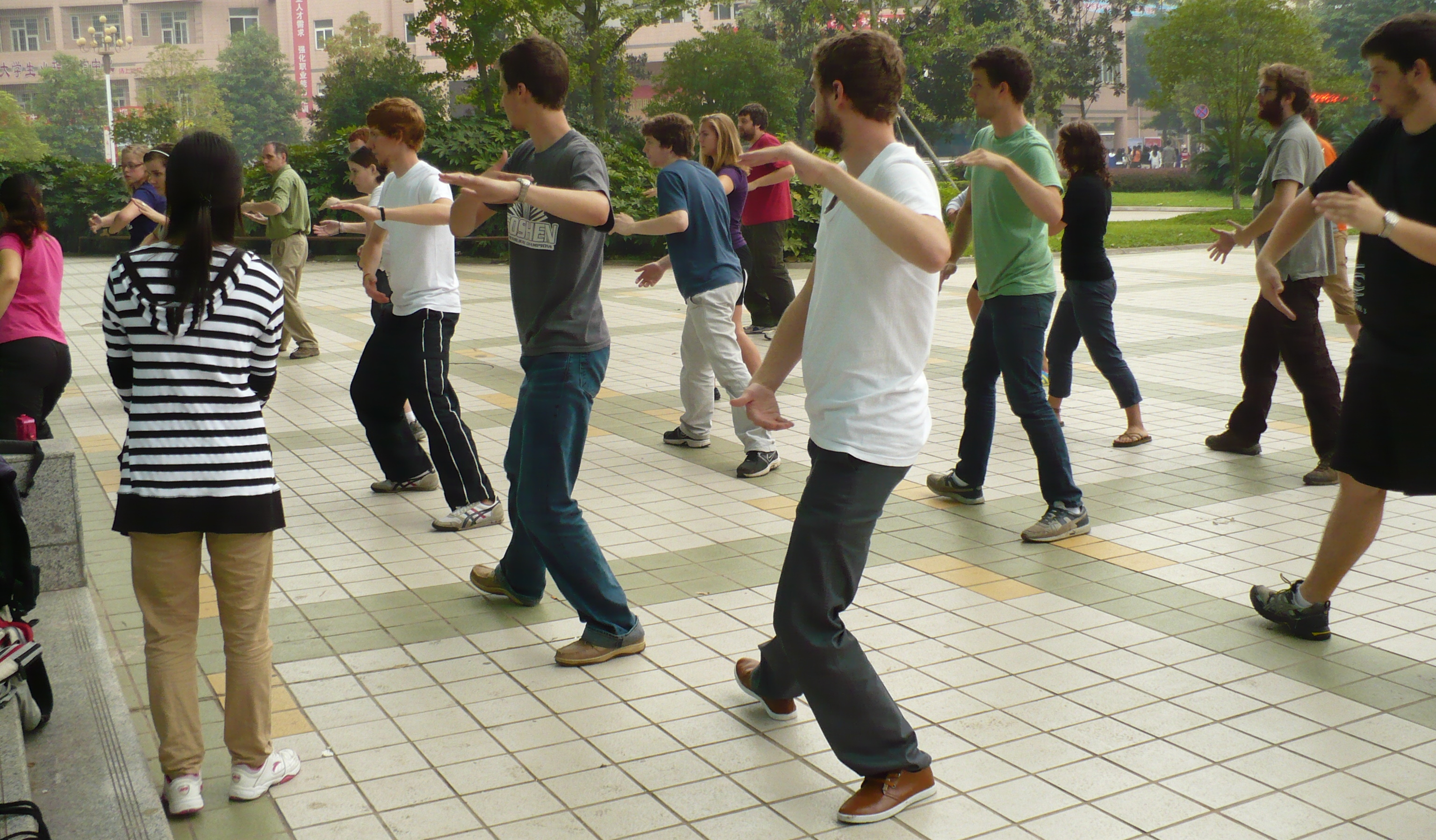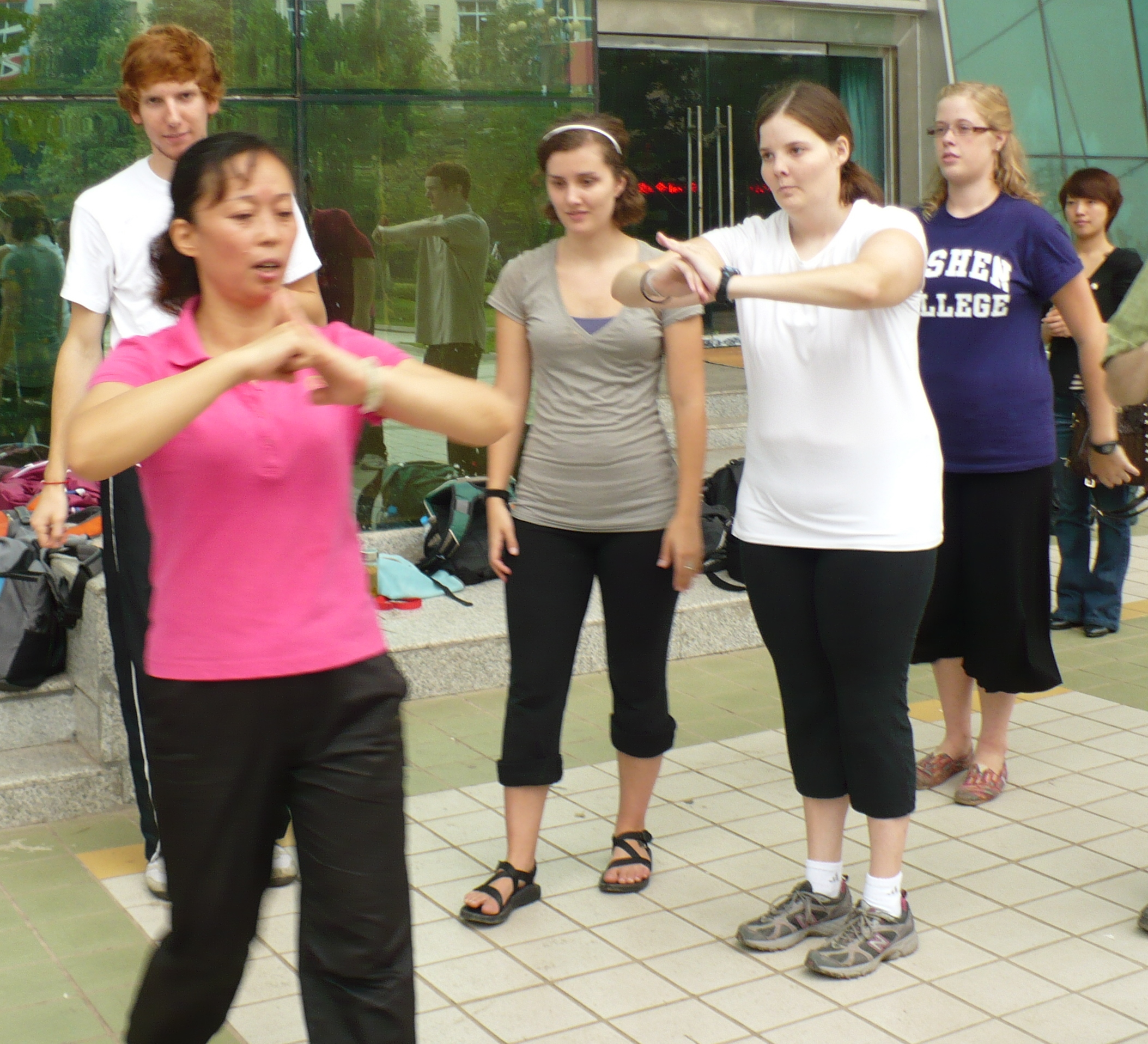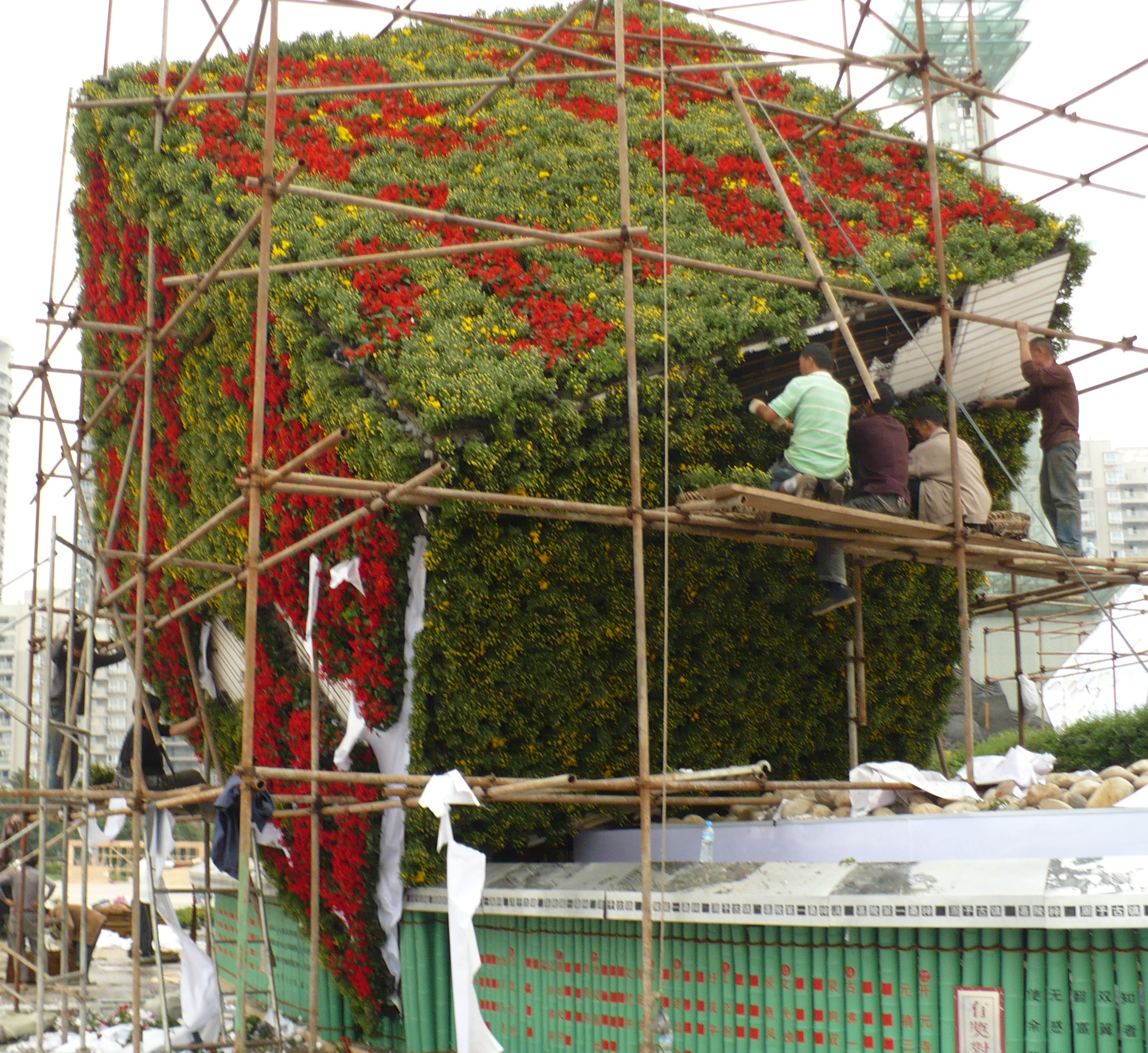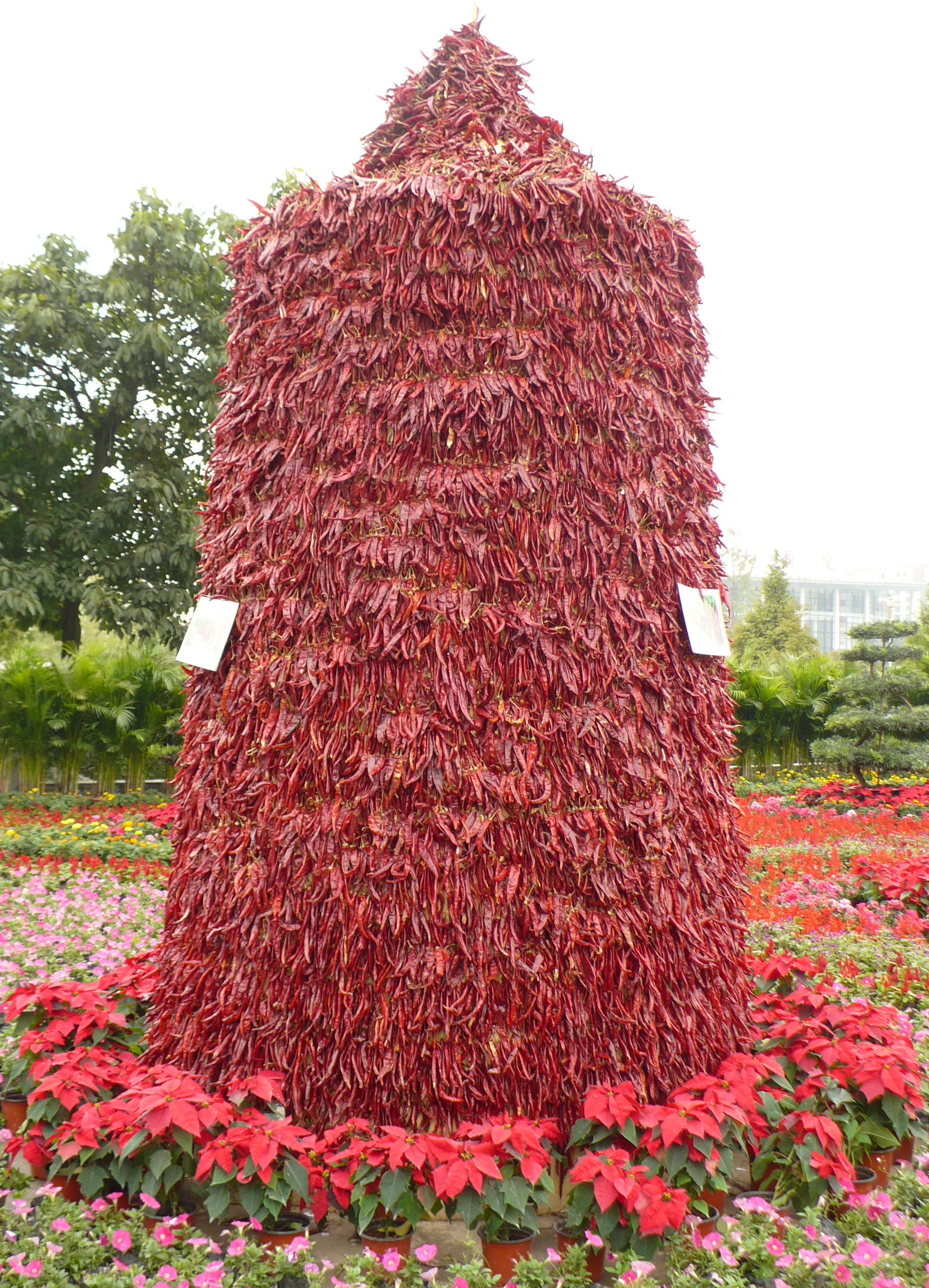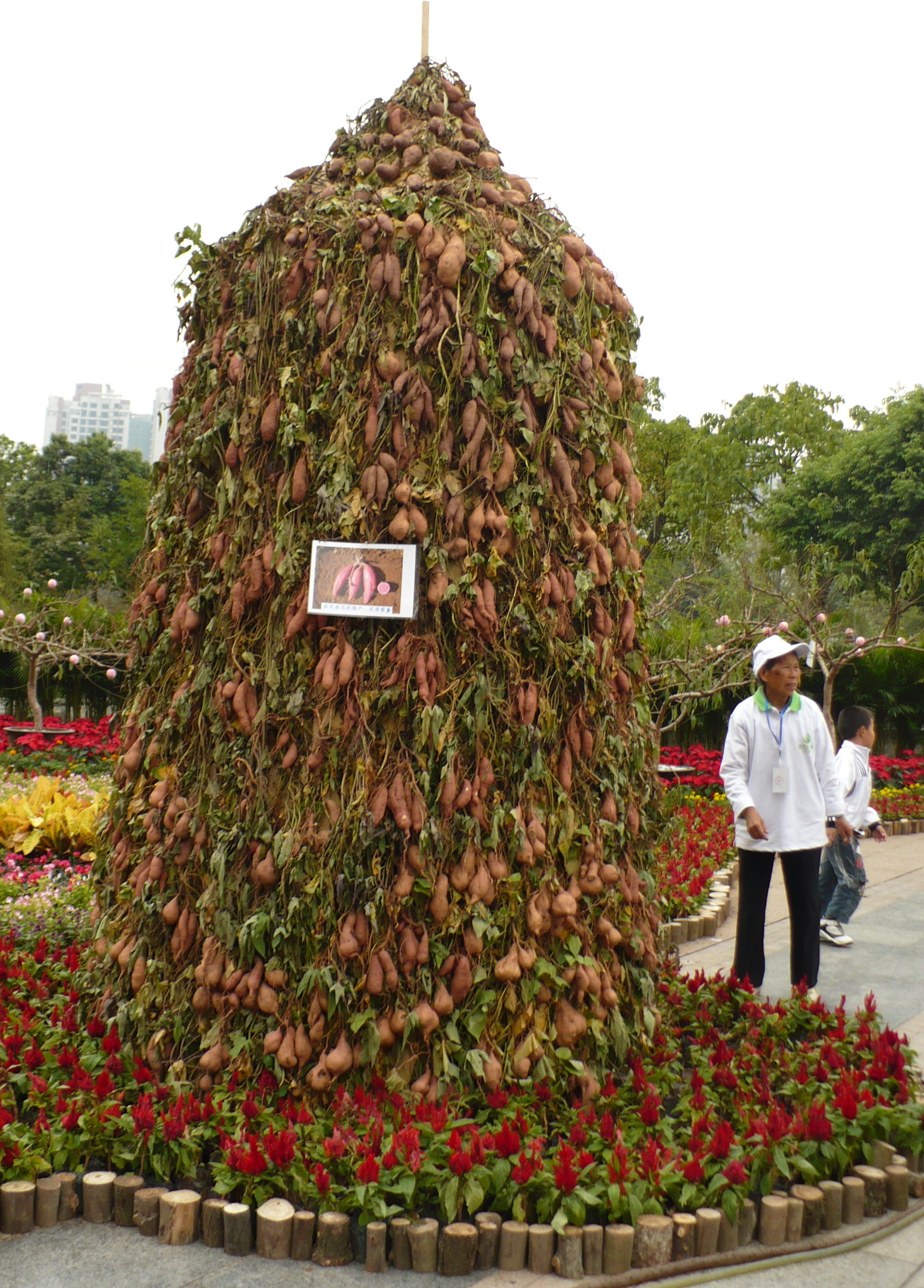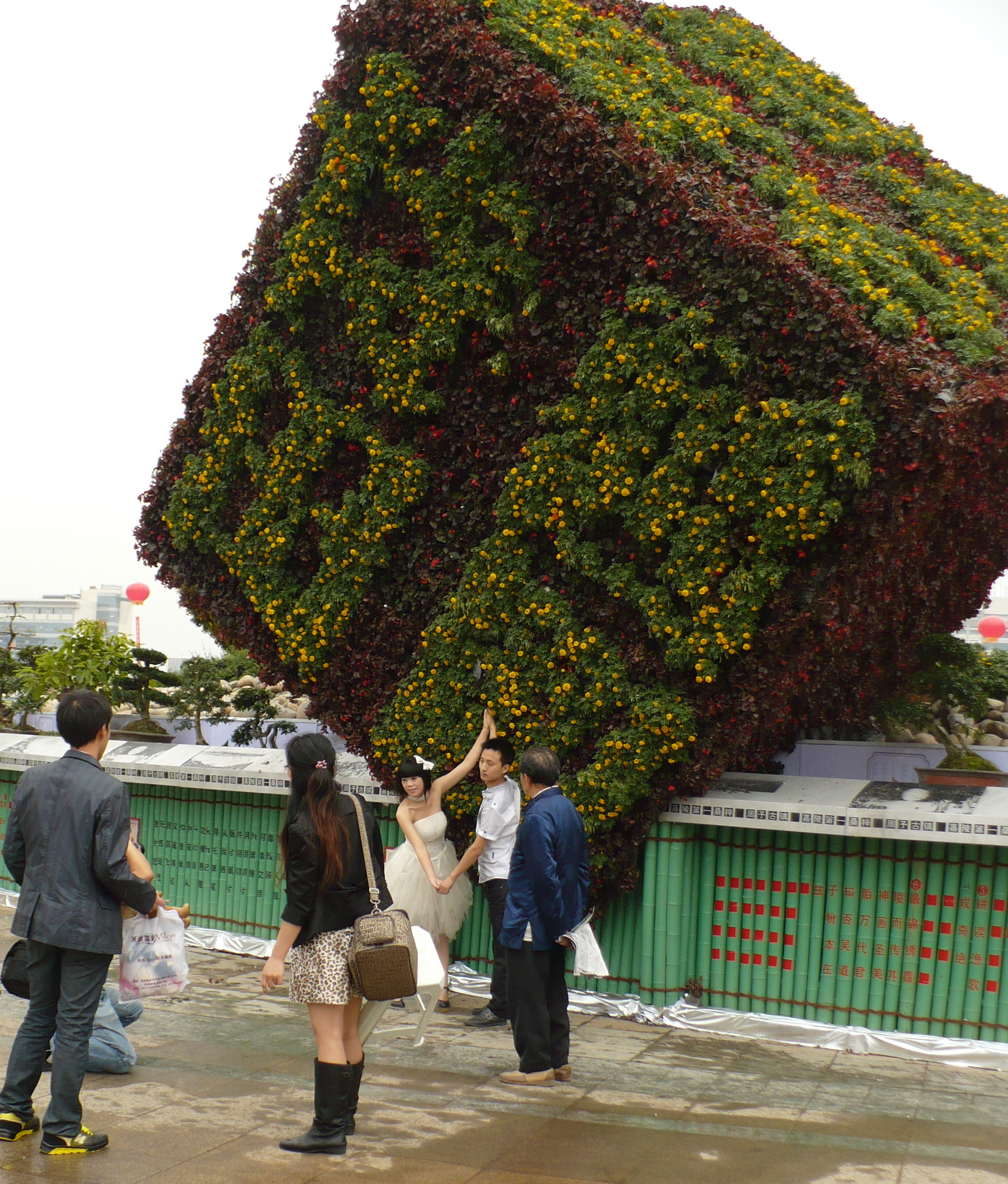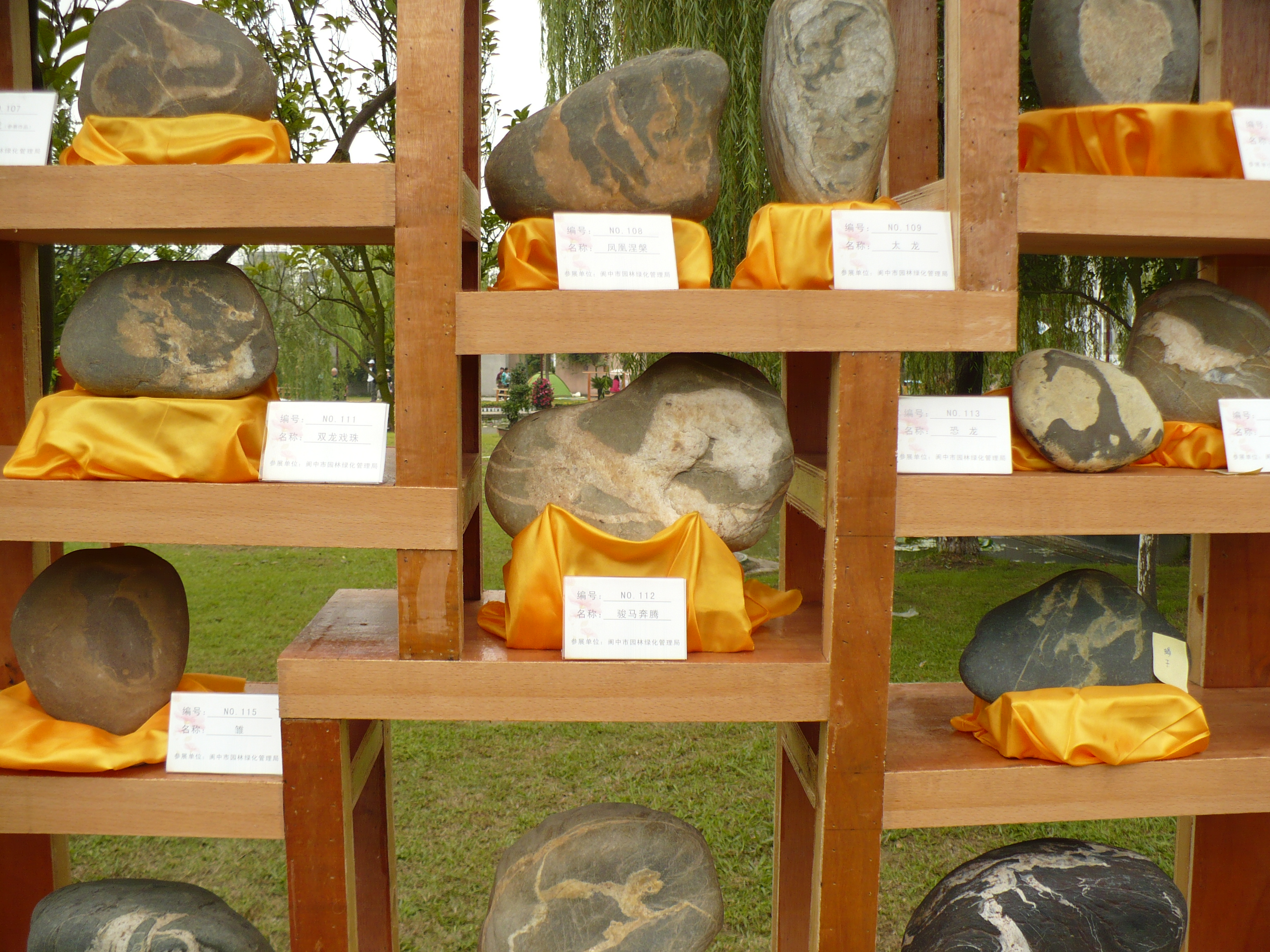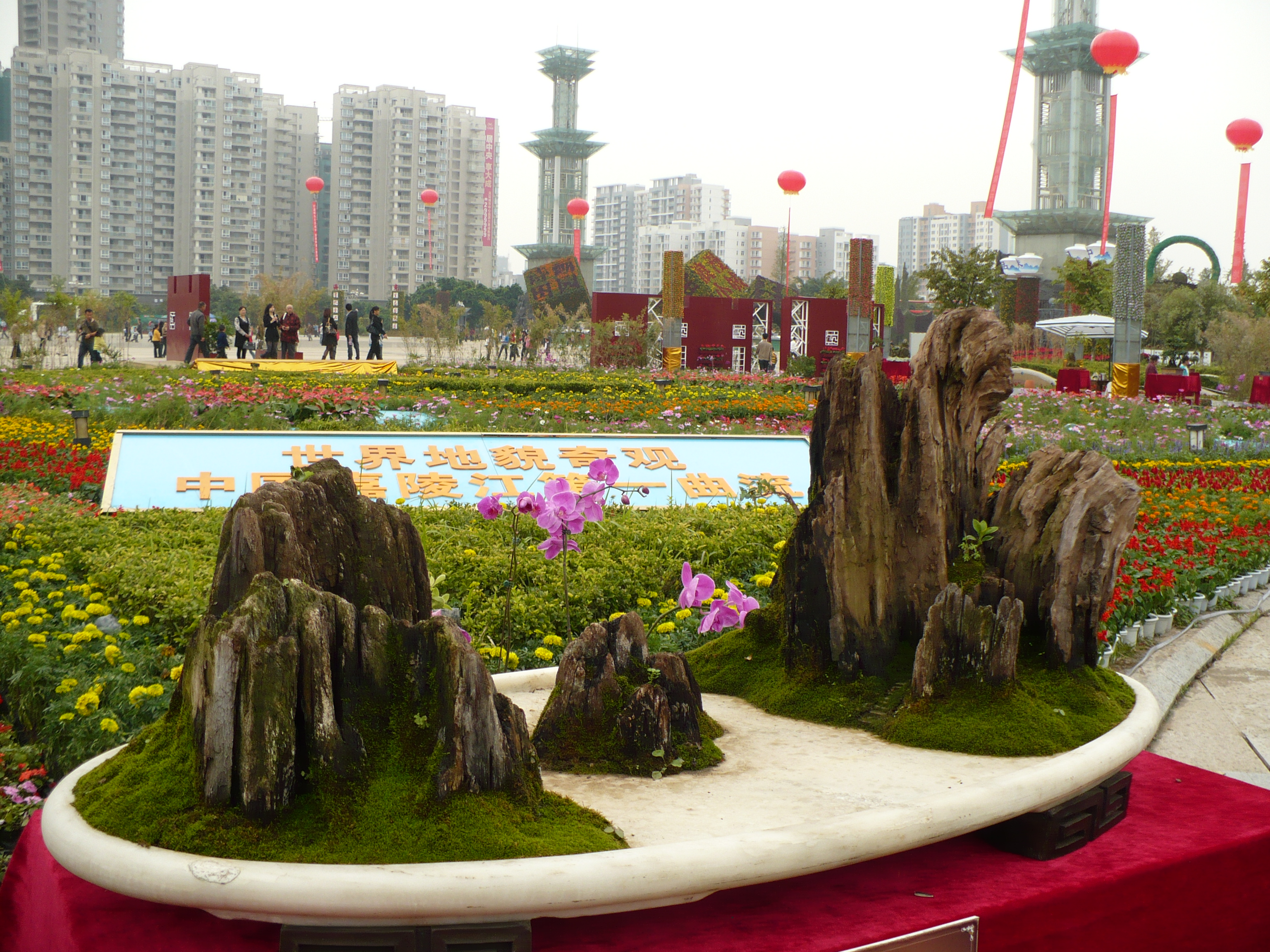Taiji
This week we’ll document Monday’s introduction to taiji, a form of exercise that many Chinese people engage in regularly. Passing through parks or other public spaces, our morning landscape is populated with groups or individuals moving through one of several popular series of motions generally described as taiji. Many practice this for its health and stress-reduction benefits. Others concentrate on its longer historical association with the martial arts. We had an excellent teacher who guided us through initial stretching exercises. Then, very patiently, she helped us through a series of 24 movements that constitute one of the most widely-practiced forms of taiji. If we had posted a video, you would note a big difference between the beginning and end of our lesson. We’ll see how well we do in a second session (with a different teacher) next week.
Several of our lectures this week dealt with Chinese film. Incorporated into these lectures was much information about cultural differences that will help us better understand Chinese literature and film. One lecturer began by asking questions about the symbolic meaning of imagery such as the moon or a road. For the moon, we offered answers such as “night” or “ominous.” A road brought thoughts of “heading out on adventure” or “travel to distant places.” For Chinese people, widespread knowledge of a short classical poem links the moon to homesick thoughts of mother and father. A road is inevitably “the road home,” a return rather than a departure. Later in the week, Becca’s host mother talked about aspects of nostalgia in one of China’s most popular recent films The Hawthorn Tree. She expanded her comments to describe other ways the rapid pace of change in current Chinese culture generates interest in revisiting styles or modes of behavior from earlier, so-called simpler eras.
Today, Oct. 1, is the Chinese National Day, marking the founding of the New China in 1949. Earlier in the week and again today some of us visited the large plaza outside the local government buildings. Municipalities and counties in this region have created large floral displays to mark the holiday. Some featured regional crops or other specialties, such as tea traditions. The plaza also featured displays of rocks and roots that had marks or shapes reminiscent of Chinese characters, pictures of animals, etc. Next to the lunar New Year, Oct. 1 is the biggest holiday in China. Nevertheless, we saw many businesses, even banks, open for business today. The university, however, is beginning a seven-day break. That means that most of the next week our SST group will be exploring several destinations in the region outside Nanchong.
